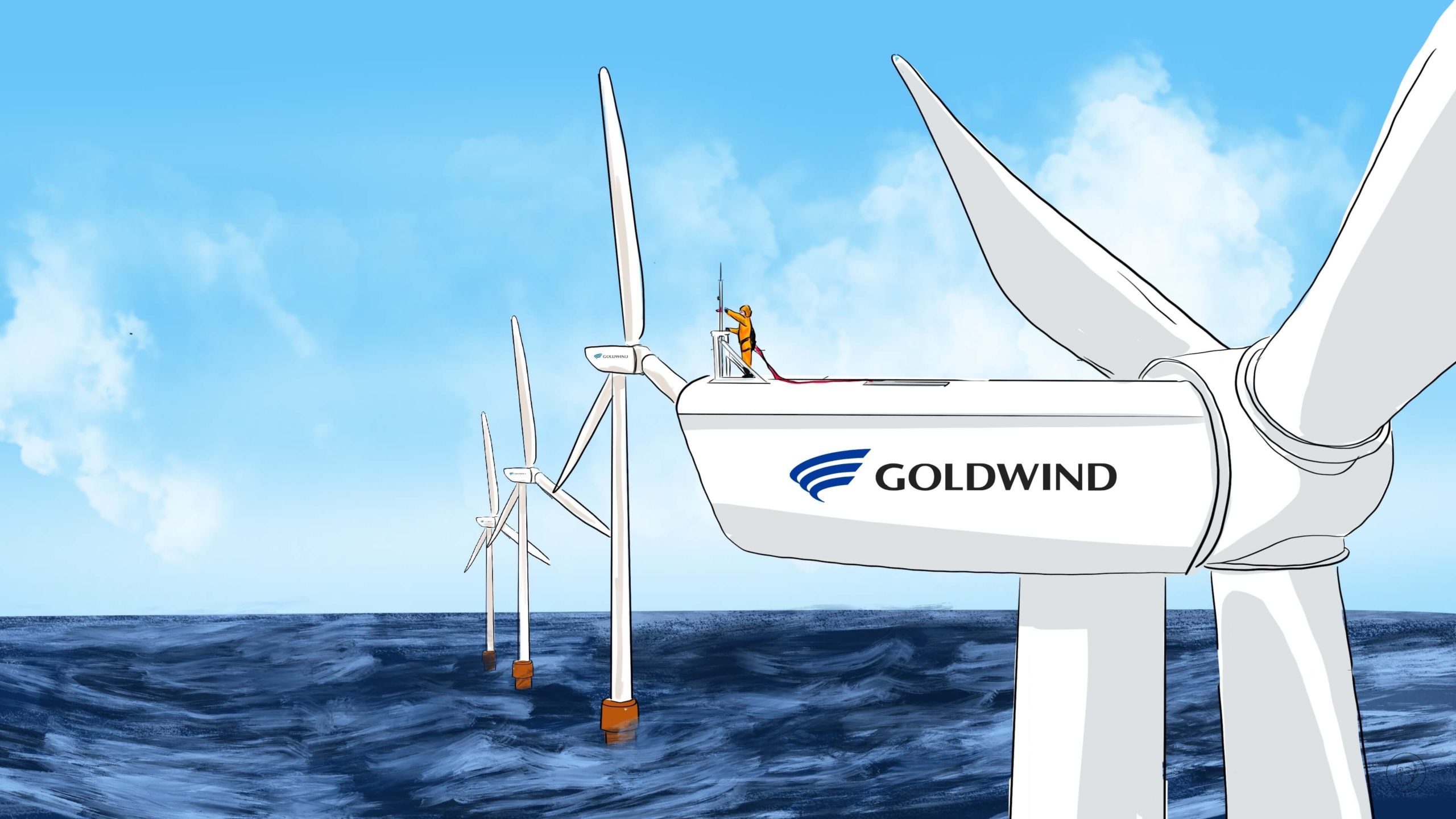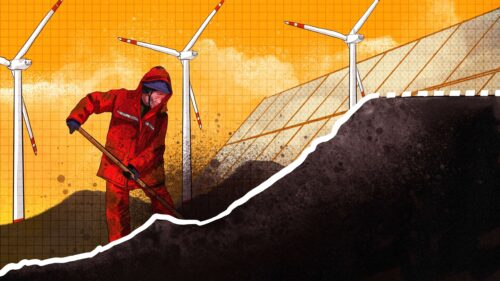China is building gigantic wind turbines, but are they too cheap?
The largest wind turbine in the world has just rolled off the production lines in Fujian Province and will soon be erected in the Taiwan Strait, a symbol of China’s wind power golden age. But foreign customers are not buying Chinese turbines, despite (or because of) their ultra-low prices.

The largest wind turbine in the world rolled off the production lines on November 23 at the Fujian Three Gorges Offshore Wind Power International Industrial Park, according to Chinese media reports. The 16-megawatt (MW) GWH252 offshore wind turbine will be erected off Fujian Province in the Taiwan Strait, and it’s indeed fantastically large:
- The whole structure is 146 meters (479 feet) tall, equivalent to a 50-story building.
- The rotor diameter is 252 meters (826 feet), the largest in the world.
- The rotor sweeping area, i.e., the total area that the turbine blade covers as it moves, is about 50,000 square meters (538,195 square feet), equivalent to the area of seven standard soccer fields or nine American football fields.
- On average, with just one revolution of its rotor blades, the 16 MW turbine can generate enough electricity for one family for seven days.
- The turbine can produce about 66 million kilowatt-hours (kWh) of clean energy per year, which can provide electricity for 36,000 households while reducing the use of coal by about 22,000 tons and carbon dioxide emissions by about 54,000 tons.
This new 16 MW turbine is a major milestone for the Chinese wind turbine industry, and for China Three Gorges Corporation and Goldwind, which produced the new machine. The same team has been breaking wind power generation records in the last few years: In 2019, its biggest turbines could generate 8 MW, and in October 2022, it announced the completion of a 13.8 MW turbine.
Offshore wind power expanding faster than onshore
Not all China’s new turbines are going to be this big: Offshore wind turbines can be astronomical in size, but onshore turbines are much smaller, as they are subject to land usage and physical obstacles. The largest onshore wind turbines ever produced in China were erected by Huadian Energy 华电新能 in Xinjiang in October, standing at 110 meters (360 feet) tall, with a rotor blade length of 93 meters (305 feet), and a generation capacity of 6.7 MW. (These are not the largest onshore wind turbines in the world — the biggest is currently the 7.2 MW, 199-meter/653-feet turbine produced by Danish company Vestas.)
Chinese media are calling the new 16 MW colossus a stunning embodiment of China’s wind power progress, from copying and following to equaling and finally to beating the world’s leading producers. The shaft bearings and ultra-long lightweight carbon fiber rotor blades were all domestically produced, as were the sensors that cover the turbine, which allow it to autonomously adjust the power and angle of the fan.
China is currently in a golden age of wind power, or perhaps more accurately, China is in the middle of a headlong rush to expand wind power capacity. According to the 14th Five-Year Energy Modernization Plan released by the government in March, wind power and photovoltaic power generation must be doubled in the 14th Five-Year Plan period (2021–2025). Over this period, 300 gigawatts (GW) of wind power must be installed, and the cumulative wind power capacity should reach 581 GW by 2025. As of October 2022, total wind power capacity had reached 348 GW, still 67% short of the target.
Offshore wind power is expanding faster than onshore wind power: In October, the bidding volume of wind turbines in China was 3.35 GW, a decrease of 53.29% month-on-month, but the bidding volume of offshore wind turbines was 1.27 GW, a fivefold increase from September.
China news, weekly.
Sign up for The China Project’s weekly newsletter, our free roundup of the most important China stories.
Low prices and doubts about quality
Overall wind power investment in China has decreased in 2022 because of fierce competition for wind power projects, which has depressed wind turbine bidding prices. Some of the winning bids awarded by the State Power Investment Corporation and SDIC Power have been as low as 1,800 yuan ($250) per kilowatt (kW), or even lower. For wind turbine manufacturers, 2,000 yuan ($278) per kW is usually the break-even point.
Foreign companies often withdraw from the bidding process when the price falls below 3,000 yuan ($418) per kW. This fierce competition has caused some foreign companies to withdraw from the Chinese market altogether — the most recent departure was earlier this month when Siemens Gamesa Renewable Energy, a company headquartered in Spain, gave up on China. As a result, in China, wind power projects are dominated by local companies, including the three market leaders Goldwind, Envision Energy, and Ming Yang Smart Energy.
But the domestic champions have made little headway in overseas markets: In 2020, Chinese companies accounted for just 2–3% of installed wind power capacity. Foreign wind power inspection agencies reportedly still have some doubts about the quality and reliability of Chinese wind turbines, as the manufacturers in China are under constant pressure to lower costs.






